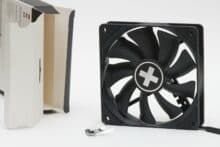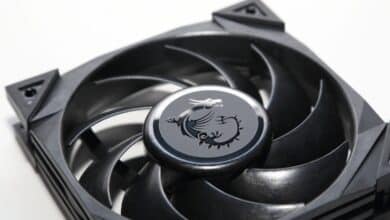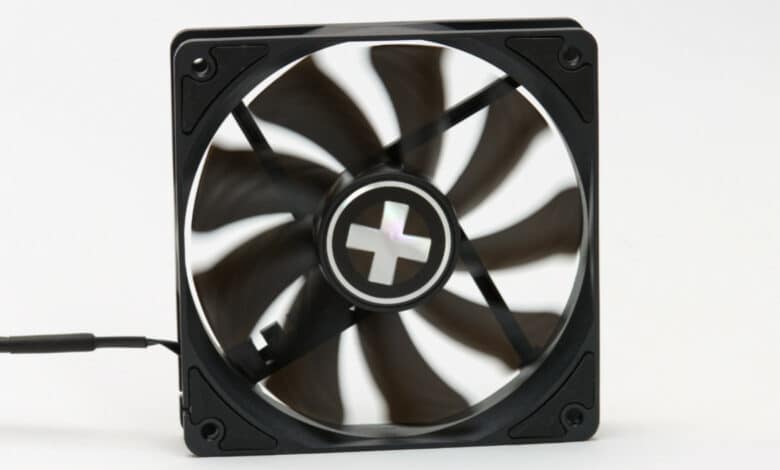
Xilence is a German brand that belongs to Listan GmbH, especially as a cheap sister brand of be quiet! Thus, a lot of equipment of the lowest price segment can be found under this brand, and the most expensive models roughly cut the price range at which be quiet! enters. There is a certain overlap, of course. We find one such case in the Xilence XPF120X.B.PWM review. This rather awkwardly named 120mm fan is one of the more expensive 120mm fans in Xilence’s lineup, without being really expensive. What can this fan do? Is it useful at all or should we go straight to similarly priced models from be quiet! This is put under the microscope here in the Xilence XPF120X.B.PWM review!
Specifications
| Size | 120 x 120 x 25 mm |
| Speed | 500 – 1500 RPM |
| Connection | 4-pin PWM |
| Bearing | Fluid Dynamic Bearing |
| Weight | 145 g |
| Air flow | 63.41 CFM |
| Price | € 5.96 * |
And if we briefly analyze the name: Xilence XPF120X.B.PWM – this name is really counterintuitive, but a reasonable explanation of the jumble of letters and numbers would be Xilence Performance Fat 120 mm X series Bpaint with PWM connector.
Packaging and scope of delivery
- Simply kept packaging without padding
- Only accessories are case fan screws
Typical for Xilence is a rather simple packaging in black and white design with red accents and the product imprint in drawing style. This is also the way the Xilence XPF120X.B.PWM is packaged. The packaging is quite compact, which is not really surprising considering the price. The surprise is just as small when you only find a pack of fan screws apart from the fan in the scope of delivery. After all, you want to invest as much as possible in the actual product than in other stuff in this price range.
Design and workmanship
- Little spectacular fan frame
- High-quality processed fan blades
- Cable sheathing available
The Xilence XPF120X.B.PWM comes from the “Performance X” series. This is the highest class of Xilence, above Performance C as the lower class and Performance A+ as the middle class. Where the lower classes often come with red fan blades, the only thing about the Xilence XPF120X.B.PWM that is directly reminiscent of the brand’s look is the cross in the middle between the fan blades. This also stands out visually due to the metallic sheen and definitely gives a haptic high-quality character. Apart from that, the fan frame looks simple for the most part. What is to be found, however, are rubberized support surfaces, which are actually still rather rare in this price range.
Also unusual for the price is the cable sheathing on the Xilence XPF120X.B.PWM. This also appears high quality and similar to Noctua fans. This protects the cable in tight places or on sharper edges – and looks high-quality to boot.
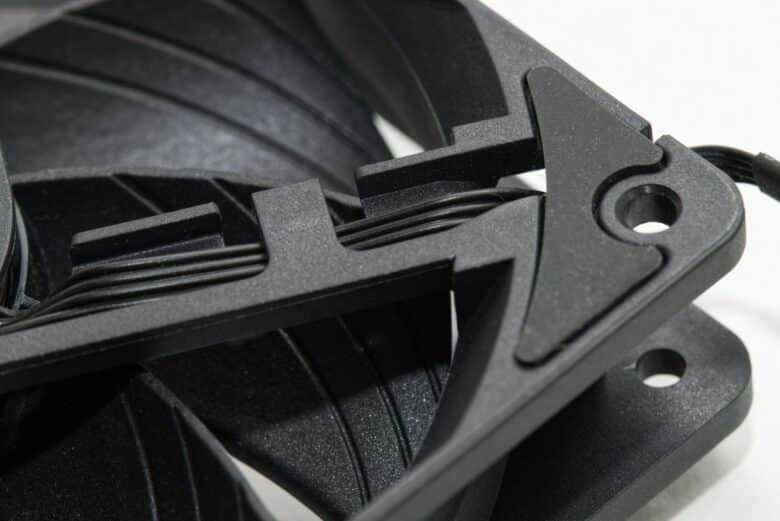
The cable routing from the fan motor to the edge of the frame has an unspectacular solution, but it is black and unobtrusive.
Test procedures
- Explanation of the test setups
- Test on the AIO radiator, on the air cooler and as a case fan
For the test of the Xilence XPF120X.B.PWM, three sequences are performed. Once the typical use as a case fan, then on a radiator of an all-in-one water cooling system and finally as a replacement fan on an air cooler.

For the tests on the coolers, the processor (AMD Ryzen 9 5950X cooled by an Arctic Liquid Freezer II 240 and an AMD Ryzen 5 3600X cooled by an DeepCool AK400) is warmed up with a Cinebench R23 load for 8 minutes and then the temperature is measured for one minute and averaged. The case fans are set to a fixed speed here so as not to affect noise or performance with automatics.
For the Xilence XPF120X.B.PWM test as case fans, the fans on the processor cooler and on the graphics card are set at a low level and only the case fans change. Here, one fan is placed in the front of the case (DeepCool CH510 Mesh Digital) and one in the back. 3DMark Night Raid is used as the load here and the components get 10 passes to heat up here and during the eleventh pass, the temperature of the graphics card and processor is measured.
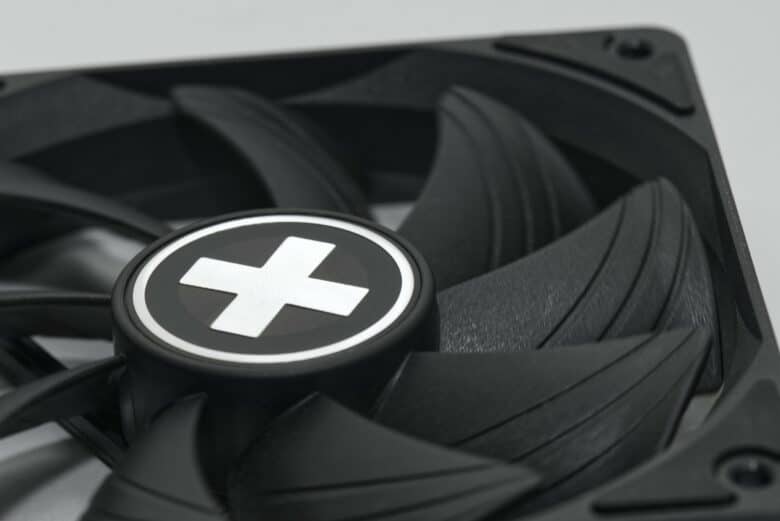
There are three scenarios for all tests: A consistent speed, a consistent volume, and at full speed.
The temperature results are adjusted for the room temperature and given as a difference (“delta”). Thus, the measurement result is also not affected by a fluctuating room temperature.
Use as a case fan
- Top performance at high volume
- Mid-range performance at controlled speed
At a uniform 1100 RPM, the Xilence XPF120X.B.PWM gets decently powerful in testing. In the large case fan test (120mm), it even achieves the best temperatures in the CPU temperature range and the graphics card temperature is decent as well. A weakness that costs the Xilence fan some points is the rather high noise at 1100 RPM.
If you now take this accordingly as a reference and set all fans to just stand out from the other fans in the system, then the Xilence XPF120X.B.PWM will have to spin much slower and of course lose some performance. This is the case with many pressure-optimized fans, and so it’s not surprising that they Xilence XPF120X.B.PWM perform similarly here to the Sharkoon SilentStorm BW120 PWM, the Corsair SP120, or the Noctua NF-P12 redux. Overall, they land in the midfield in terms of performance here, which is definitely a solid result for such inexpensive fans.

If you now give the fans free rein because the volume doesn’t matter and only the performance counts, then the Xilence XPF120X.B.PWM with its maximum speed around 1500 RPM is of course not a top performer, but the performance is perfectly sufficient for all everyday applications. The Noctua NF-P12 redux-1700, the DeepCool MF120GT and Arctic P12 PWM perform similarly. The Arctic fan is significantly quieter, and the others find themselves in a similar volume class. Quite a solid result. At speeds below 800 RPM the Xilence XPF120X.B.PWM is barely noticeable, as an everyday speed when fully loaded as a case fan I would probably target about 700-750 RPM.
It might be interesting to compare it with the similarly priced sister model from be quiet!, the Pure Wings 2 PWM – the Xilence fan beats it in every test in terms of performance. The be-quiet! fan only remains noticeably quieter in terms of volume at 1100 RPM.
Performance as a radiator fan
- Very good performance on the radiator
- Solid mid-range performance at low speeds
- Not too high maximum RPM, but decent everyday performance
Same procedure: In the test as a radiator fan at 1100 RPM, the Xilence XPF120X.B.PWM shows that it definitely offers decent performance. It plays among the top performers here and is in a performance class with some Noctua fans, such as the NF-P12, NF-F12, and NF-A12x25. In terms of volume, the Xilence fan performs a bit worse – especially compared to the NF-A12x25 – but it’s priced much better. If you disregard the volume, it beats all fans from be quiet! to the expensive models in this discipline.
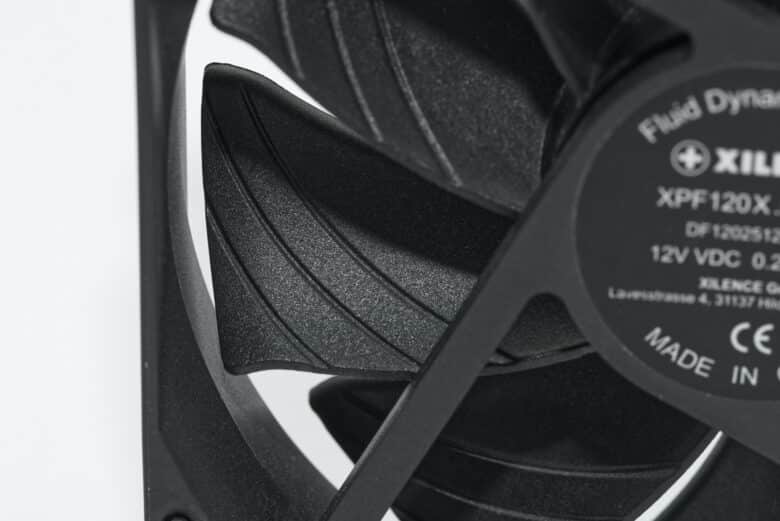
Now, what if you normalize the volume? Okay, here of course the Xilence XPF120X.B.PWM has to slow down significantly to adjust and accordingly the performance sags a bit. But still, the performance remains decent even at lower speeds. Performance remains comparable to the Sharkoon SilentStorm, the Noctua NF-P12 and the Seasonic MagFlow 1225 PWM. The be quiet! Pure Wings 2, on the other hand, are clearly beaten in this test as well.
At peak performance, the game of the test repeats itself as a case fan. The Xilence XPF120X.B.PWM does a decent job here, but doesn’t stand out much from the crowd. With the not-too-high maximum speed, it does not come close to high-performance fans in terms of performance, but lands in the midfield all around. So it beats many other fans, like most models from be quiet! and also outperforms the Sharkoon SilentStorm here, which performed comparably in the previous tests. But the volume gets, if not excessive, not really pleasant anymore.
Overall, the Xilence XPF120X.B.PWM is definitely a very decent radiator fan – especially for the price!
On the air cooler
- Good performance
- Solid interchangeable fan if looking for a replacement for the 120mm air cooler
- Loudness tolerable even at peak performance
On the Xilence XPF120X.B.PWM test on the air cooler, the startup at 1100 RPM again looks very promising. Here, the one fan is just noticeable and offers one of the strongest performances in the comparison. Respect! Except for the NF-S12A, all Noctua fans are also beaten here performance-wise.
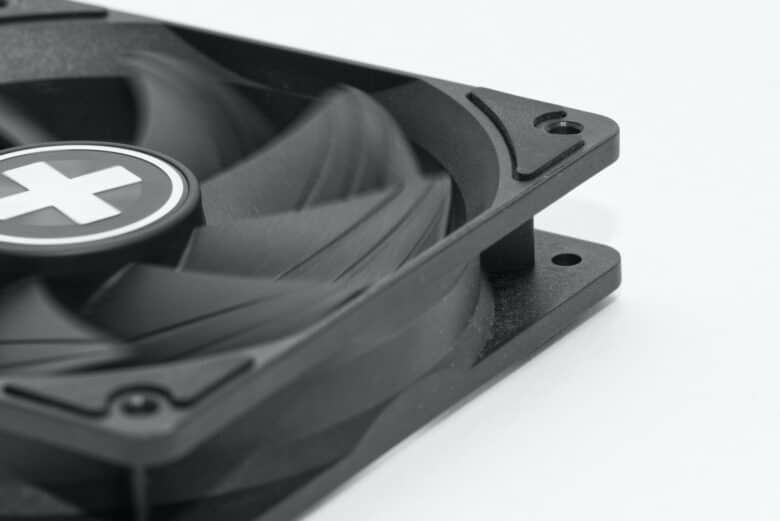
That changes a bit when you normalize for volume, though, because even though the speed needs to be reduced less here than in the previous tests, some other fans can be cranked up significantly more, sprinting ahead. Nevertheless, the Xilence XPF120X.B.PWM still lands in the solid midfield and is here, for example, on a similar level as the significantly faster spinning Arctic P12 PWM PST A-RGB or (as in the previous tests) the Sharkoon SilentStorm. And once again, the Pure Wings 2 from be quiet! are beaten.
At peak performance, the Xilence XPF120X.B.PWM once again sits between the DeepCool MF120GT and the Seasonic MagFlow 1225 – though the Xilence fan is slightly quieter than the two competitors. On the air cooler, the maximum performance is even still tolerable for everyday use when it comes to volume. Sure – you can hear it, but the performance is quite solid and the volume does not create worry lines yet.
Conclusion
The Xilence XPF120X.B.PWM, as unimpressive as the name is, shows itself to be quite a serious fan in its price range. On the one hand, it scores in terms of workmanship with the cable sheathing and the rubberized contact surfaces. On the other hand, it beats the be quiet! Pure Wings 2 PWM noticeably in virtually all disciplines. Yes, it’s not exactly the quietest fan, but the performance is so strong that you can just let the Xilence XPF120X.B.PWM spin a little slower to get quieter.
If you keep an eye on the fan curves a bit, you can definitely find some decent performance here for the low price.
Xilence XPF120X.B.PWM
Performance
Noise level
Workmanship
Value for money
82/100
The Xilence XPF120X.B.PWM is a strong and unexpectedly well-made fan for the price range, which is definitely worth a look despite the not quite low noise.




